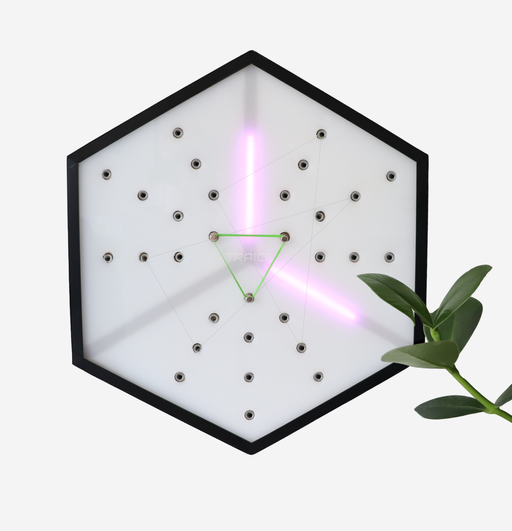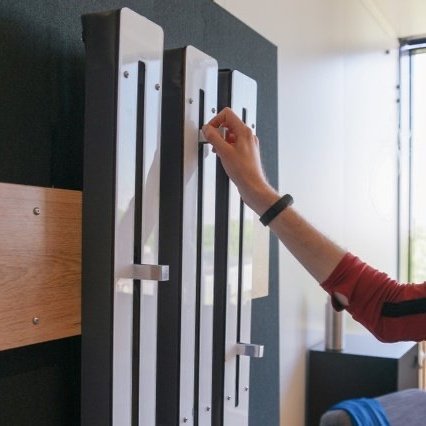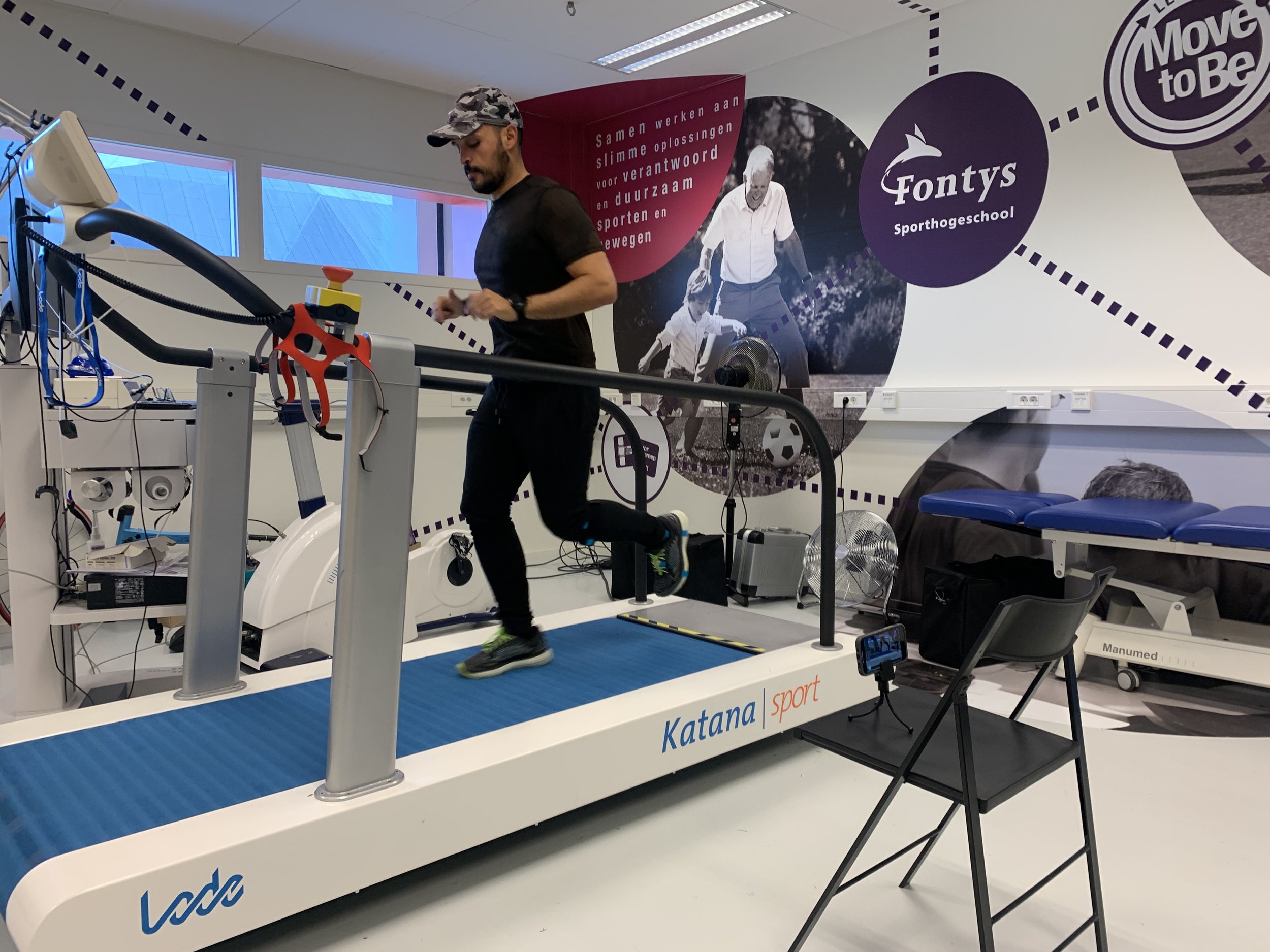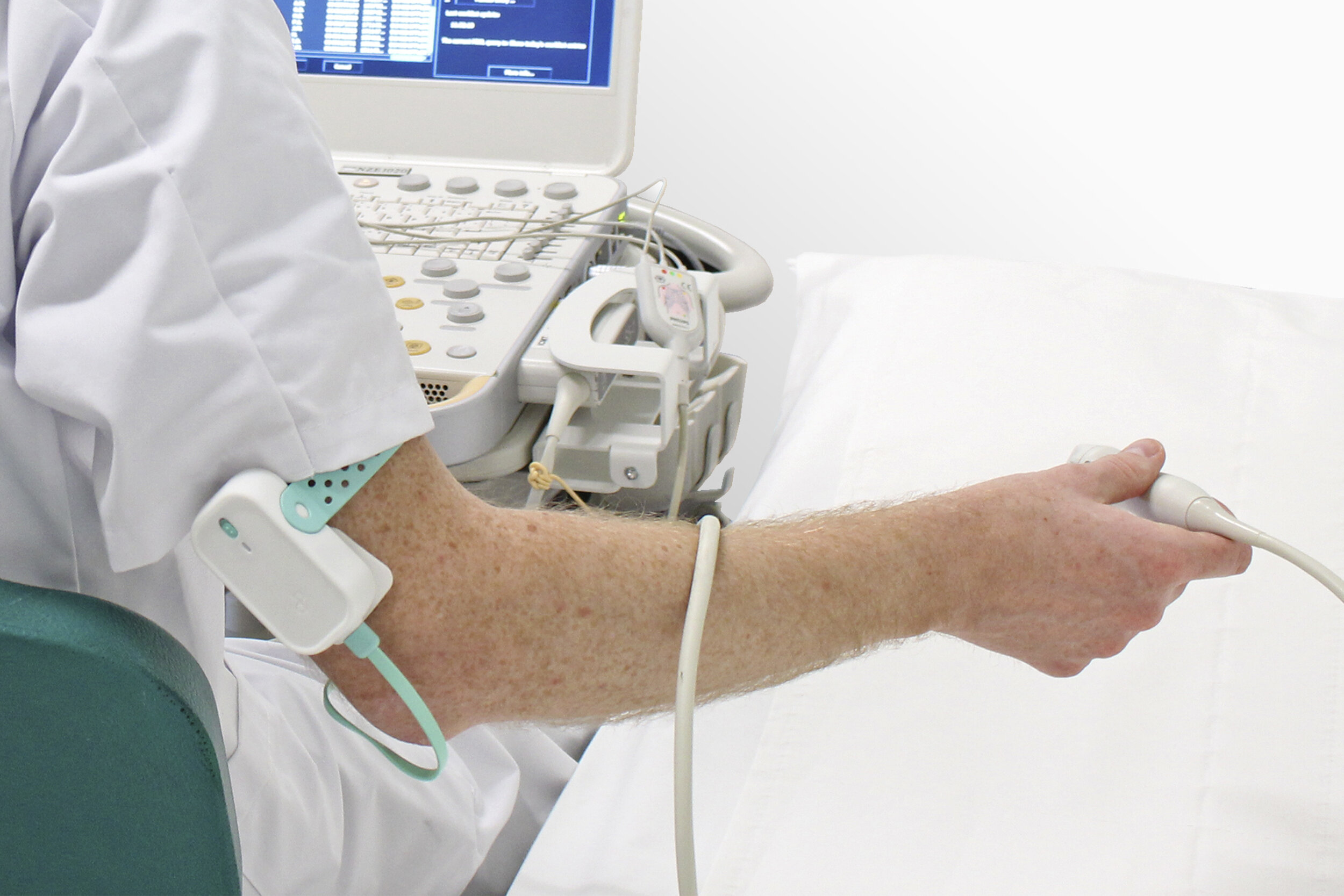As a design researcher, I focused on investigating how to improve and implement wearable and interactive systems that support, motivate and improve the health recreational athletes. Following a research-through-design approach, I explored ways to integrate subjective experiences within the sensor-generated data analysis. This highlights the importance and potential of considering qualitative and contextual data as key elements for the assessment of recreational athletes. In collaboration with design researchers, behavioural scientists, design students and stakeholders, I participated in generation of relevant knowledge for the design academic community and the industry.
Publications
Hyaku: A Qualitative Interaction-Through-Negotiation Interface to Support Runners in Achieving Balanced Training Sessions
Restrepo Villamizar, J.,Vos, S. B.,Verhagen, E.& Lallemand, C., Proceedings of the 2022 ACM Design Research Society Conference: Bilbao 25th June - 3rd July. In Press
Crafting On-Skin Interfaces: An Embodied Prototyping Journey
Restrepo Villamizar, J.,Vos, S. B.,Verhagen, E.& Lallemand, C.,28 Jun 2021,DIS 2021 - Proceedings of the 2021 ACM Designing Interactive Systems Conference: Nowhere and Everywhere.p. 1129-114214 p.
Defining the Individual Injury Profile of Recreational Runners: Integrating Off-Training and Subjective Factors into the Assessment of Non-Professional Athletes
Restrepo Villamizar, J.,Verhagen, E.&Vos, S. B.,2020,In: Proceedings.49,1,7 p., 87.
Hardloopblessures voorkomen en loopprestaties verbeteren: Hoe kan draagbare technologie helpen?
van Hooren, B.,Goudsmit, J. F. A.,Restrepo Villamizar, J.&Vos, S. B.,2020,In:Sportgericht.74,1,p. 6-116 p.
Real- time feedback by wearables in running: Current approaches, challenges and suggestions for improvements
Van Hooren, B.,Goudsmit, J. F. A., Restrepo Villamizar, J.&Vos, S. B.,17 Jan 2020,In:Journal of Sports Sciences.38,2,p. 214-23017 p.
Crossing borders in research on sport and physical activity: Proceedings of the 4th Science & Engineering Conference on Sports Innovation, Eindhoven, The Netherlands, October 11, 2019
Vos, S. (ed.),Restrepo Villamizar, J. (ed.)& Brombacher, A. C. (ed.),11 Oct 2019, Eindhoven: Technische Universiteit Eindhoven.102 p.
ONE23CYCLE: exploring design opportunities for healthy running
Restrepo Villamizar, J. C.,Vos, S. B.&Verhagen, E.,27 Nov 2018,p. 1-1.1 p.
Case studies

SKIN-LIKE INTERFACES. By integrating principles of interaction design, art and psychology, we explore the design of unconventional interfaces that facilitate the intuitive understanding of biofeedback and physiological-related information. We explored how principles from the agency and bodily ownership can be applied in the design of sport-related wearables. Through our embodied prototyping journey, we gained insights into the implications of using the skin as an interactive design material. Project by Juan Restrepo, Steven Vos, and Carine Lallemand

WARMUP. Recreational runners often struggle with finding balanced training habits, hence, increasing the risk of running-related injuries. Meanwhile, their fitness support products often rely solely on sensor data, neglecting subjective factors from users’ life, like mood and time. What if running is made negotiable? Warmup is an interactive fitness mat using music to negotiate with the runner in an embodied way. By using music and beats per minute, Warmup gives recommendations on ideal running intensity and tempo. The system starts a negotiation sequence during the runner’s warming-up, searching for a tempo you both agree upon while enjoying some nice music. Project by Ruben de Jongh. Coached by Juan Restrepo

GRACE. For recreational runners, it is often hard to find a balance in their trainings. The current technology often lacks the personal support that is needed to make running journeys more successful. TRAICE is an interactive visualization that helps runners to balance out their training routines. It gives power back to the user by letting them choose their own training instead of being told by their wearable technology, with some guidance. Each training adds a digital trace onto the board to visualize the progress. Project by Evy Murraij. Coached by Juan Restrepo

HYAKU is an interactive tangible mirror supporting runners in defining a balanced training scheme. Through a subtle negotiation process, the user perceives the recommendations of the system and shapes them to reflect their intentions and subjective feelings - Project by Juan Restrepo and Carine Lallemand

NATALIE. Health promoting wearable technologies monitor and display biomedical data. Whilst this information may support decision-making, it can be unrealistic advice. NATalie is a voice assistant that understands emotions and takes potentional injuries into account when suggesting a running scheme. As part of their running routine, the user is asked how they are feeling: they can lift up NATalie to start the negotiation. By pulling and tapping, the distance and the intensity are set. NATalie will give both audible and physical feedback on the decisions, providing the runner autonomy, but also telling them when to stop - Project by Rosa van Tuijn and Emma Driesse. Coached by Juan Restrepo.

MOIRAI helps runners self-regulate their running routine by negotiating with them. It supports them in achieving their goals while mitigating overuse injuries. Its design follows the theories of self-regulation and negotiation: each slider represents a running session – past, current, and future. The user and the system can both adjust the amount of running and the time between the sessions. Moirai employs multiple negotiation strategies according to the strategic repertoire principle, thereby supporting research on the effects of these negotiation strategies in a context of self-regulation - Project by Romain Toebosch. Coached by Juan Restrepo.

RUNNING NODES. In collaboration with Fontys and 2M Engineering, we developed a wearable systems to measure ankle dorsiflexion. The aim of this project was to define whether ankle dorsiflexion was a reliable parameter to detect running technique anomalies potentially associated with running-related injuries. As a design researcher, my interest focused on applying interaction mechanisms to deliver meaningful feedback to end users. Project developed by Juan Restrepo

ERGONODE. I conducted an iterative design process, composed of co-creation sessions and validation studies to define the most optimal system to track, monitor, and deliver posture-related feedback to ultrasound practitioners. Several low-fi and functional prototypes were developed and tested together with the final-users and in the context of use. This process resulted in the development of Ergonode, a fully functional and wireless wearable device that implements EMG sensors and an IMU to track shoulder alignment and muscle activation on the forearm. The data was gathered via Bluetooth and presented to the user through a computer-based user interface. Project by Juan Restrepo
